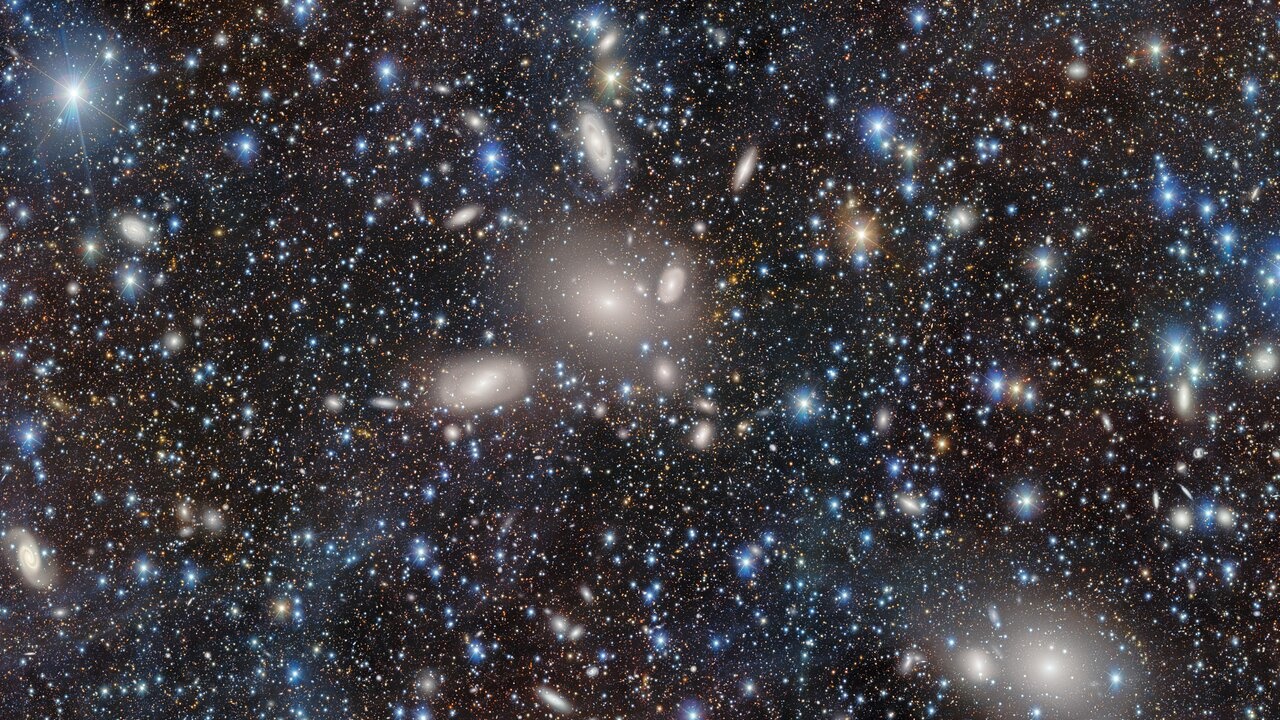Astronomers have captured a breathtaking new image of thousands of galaxies, thanks to the Dark Energy Camera (DECam) mounted on the U.S. National Science Foundation’s Víctor M. Blanco 4-meter Telescope at Cerro Tololo Inter-American Observatory in Chile.
Focused on the Antlia Cluster — a dense assembly of galaxies within the Hydra–Centaurus Supercluster located around 130 million light-years from Earth — the image captures only a small portion of the 230 galaxies that make up the cluster, revealing a diverse array of galaxy types within as well as thousands of background galaxies beyond.
The Dark Energy Camera (DECam) was originally built for the Dark Energy Survey (DES), an international collaboration that began in 2013 and concluded its observations in 2019. Over the course of the survey, scientists mapped hundreds of millions of galaxies in an effort to understand the nature of dark energy — a mysterious force thought to drive the accelerated expansion of our universe. The universe’s acceleration challenges predictions made by Albert Einstein’s theory of general relativity, making dark energy one of the most perplexing mysteries in modern cosmology. Dark matter, meanwhile, refers to the mysterious and invisible substance that seems to hold galaxies together. This is another major conundrum scientists are still trying to fully penetrate.

Observations made of galaxy clusters have already helped scientists unravel some of the processes driving galaxy evolution as they search for clues about the history of our universe. In this sense, galaxy clusters act as “cosmic laboratories” where gravitational influence driven by dark matter and cosmic expansion driven by dark energy can be studied on incredibly large scales.
Galaxy clusters, like the Antila Cluster, are prime hunting grounds for clues about dark matter in particular because, while these clusters contain hundreds of thousands of galaxies, they account for only about 5% of the cluster’s total mass. An estimated 80% is thought to be invisible dark matter, whose gravitational pull binds the entire structure together.
Thanks to its large size and exceptional sensitivity, DECam has provided astronomers with unprecedented insights into these regions of space. These include detailed observations of the super-heated plasma that fills the space between galaxies — known as the intracluster medium — and faint light emitted by a nearby supernova remnant.
As astronomers continue to analyze the rich data provided by DECam, images like the one of the Antlia Cluster offer more than just stunning visuals. They serve as windows into the fundamental forces shaping our universe. By studying the intricate balance between dark matter and dark energy within these colossal structures, scientists inch closer to understanding the mysterious mechanisms driving cosmic evolution.
Each observation brings us a step nearer to answering some of the most profound questions in cosmology, reminding us of the immense complexity and beauty of the universe.
Article by:Source
























